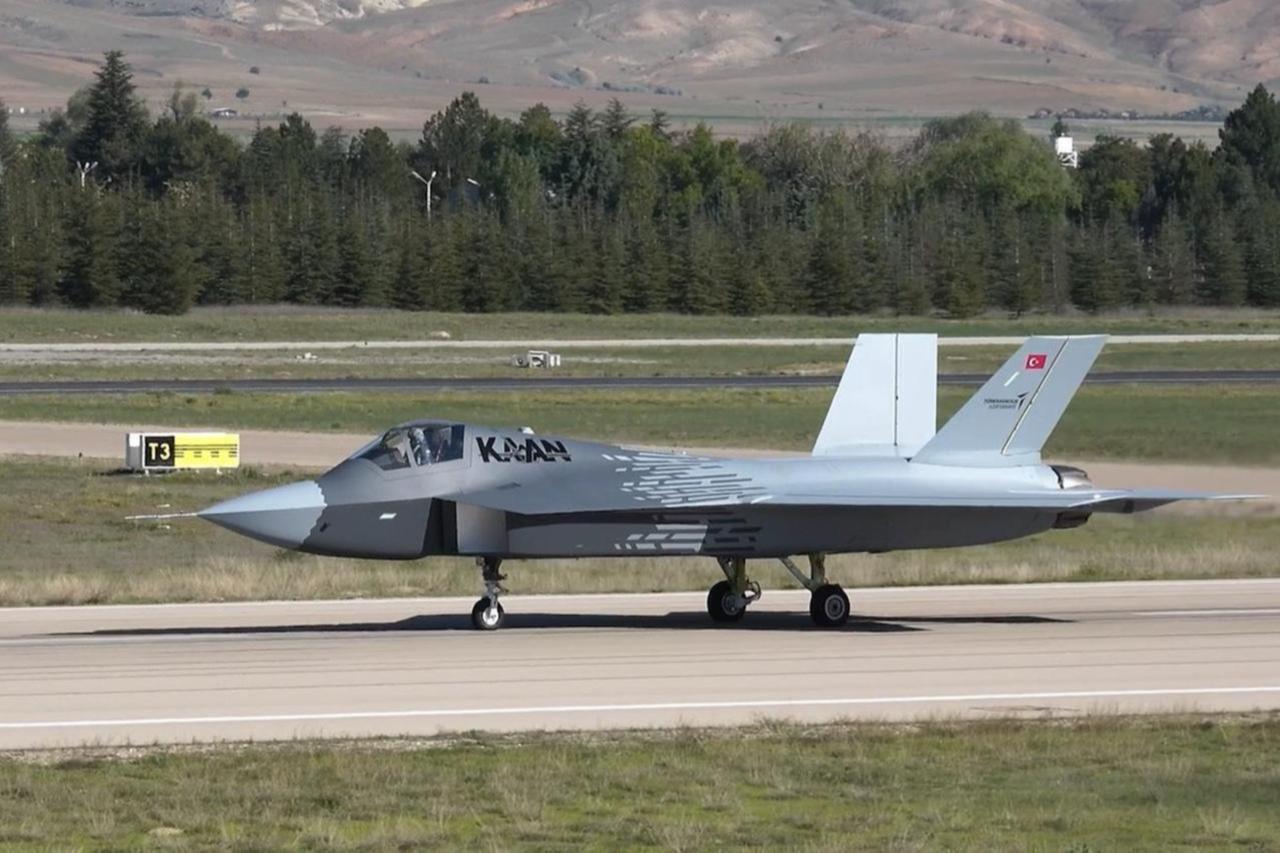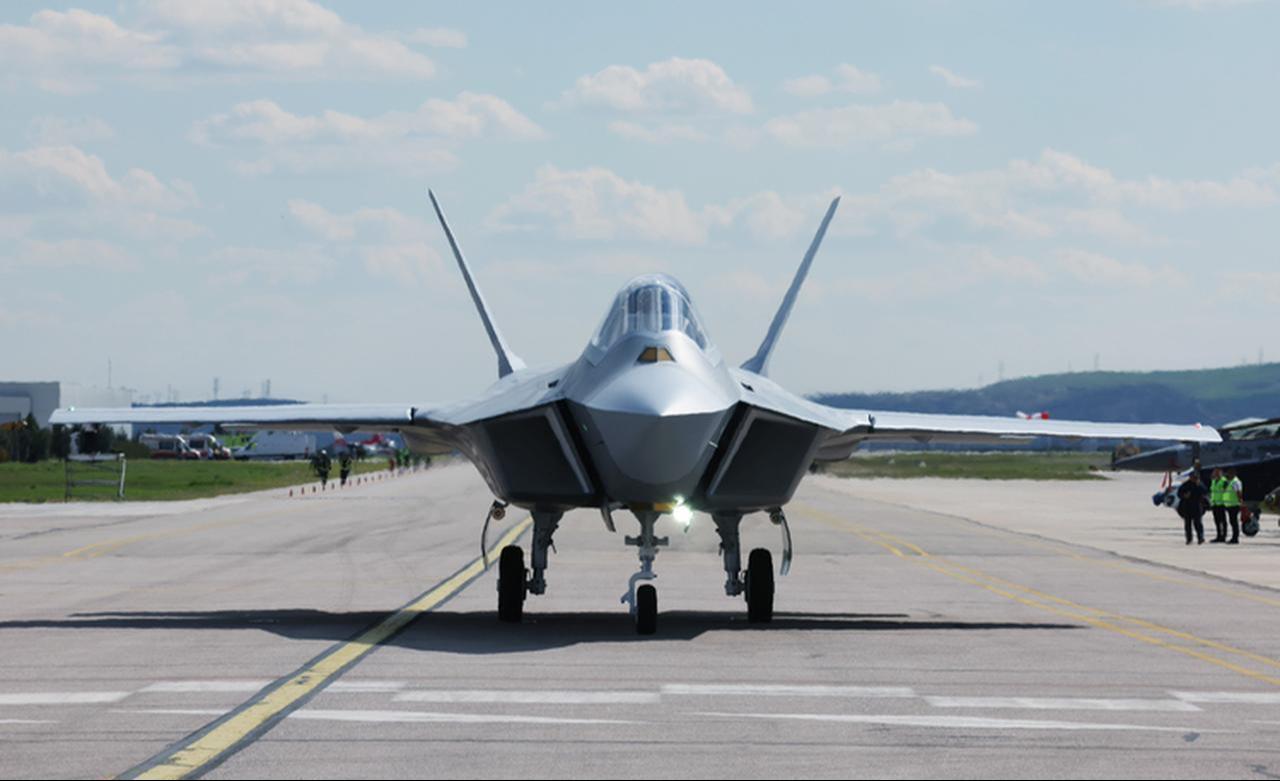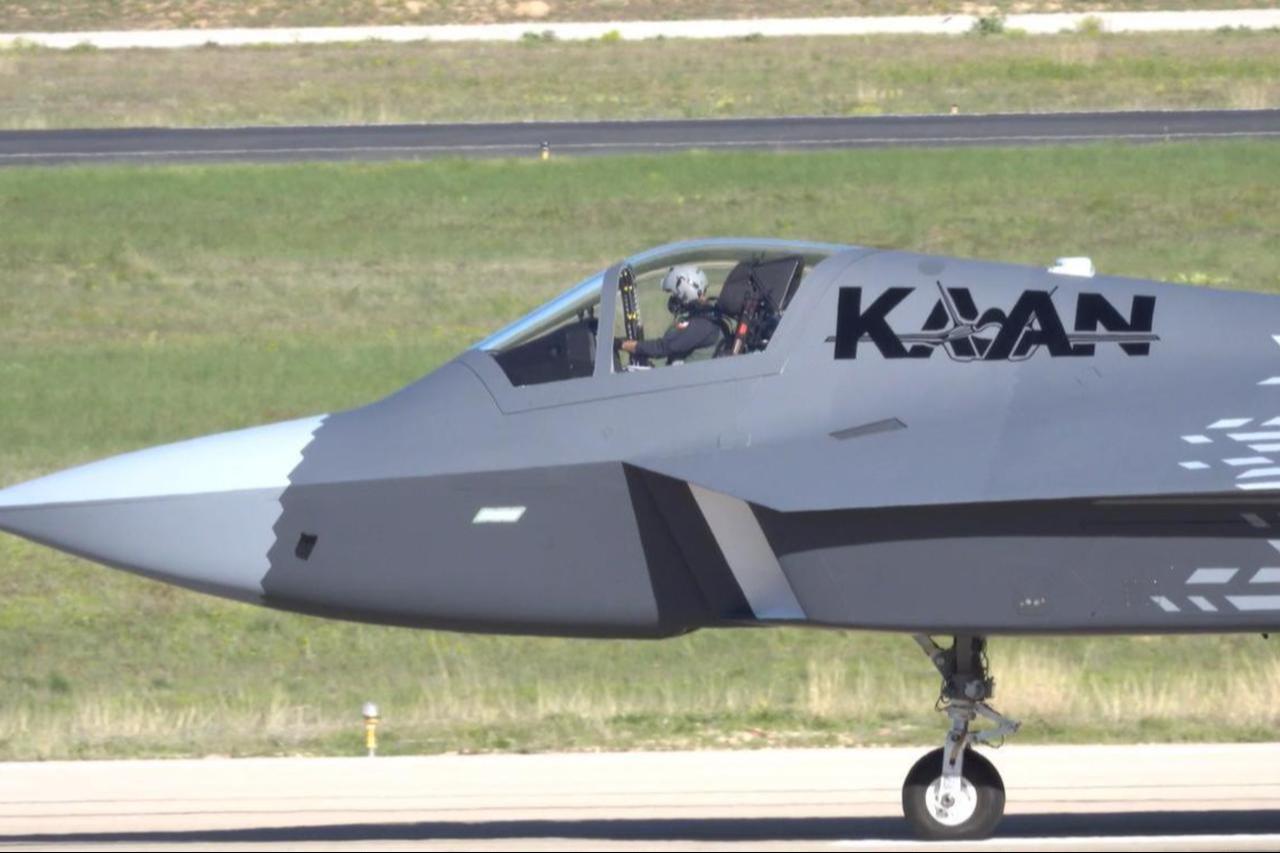
The first of Türkiye's next KAAN indigenous combat aircraft prototypes has entered the system integration phase, with Turkish Aerospace Industries (TAI) planning first flights for spring 2026, company officials announced.
TAI officials, speaking to Tony Osborne from Aviation Week on Tuesday, confirmed that two prototypes are in an advanced state of structural assembly, with system integration work underway at the company's final assembly line in Ankara.
A ground test vehicle is also in production.

TAI General Manager Mehmet Demiroglu said the two aircraft would fly in April and May 2026, marking "the beginning of intensive flight testing."
The new prototypes will be significantly more advanced than the P0 prototype, which completed two flights in 2024, and will feature most of the mission systems planned for the operational aircraft, officials said during an Aug. 28 international media tour organized by the Turkish government.
Six prototypes are planned in total to support the flight testing program.
The new prototypes are being built on KAAN's newly completed assembly line, which constructs several major component assemblies vertically or upright, including the 14-meter (46-foot) span, 3.3-metric-ton wing and center fuselage section.
TAI's presentation to journalists indicated an initial requirement for 148 KAAN aircraft, though it remains unclear whether this figure includes the 48 aircraft that Indonesia has signed up to acquire or represents only initial Turkish Air Force needs.

The Turkish Air Force Command plans to replace its large fleet of Lockheed Martin F-16s with the 34-metric-ton KAAN fighter in the coming years.
Approximately 20 aircraft are expected to enter service in 2029.
These Block 10 aircraft will have a limited operational envelope that will be expanded as testing progresses. TAI's Ankara factory can produce eight aircraft per year, but officials are evaluating the scale of facilities required for full-rate production.
Demiroglu revealed that the company is already exploring the requirements for sixth-generation fighters.
"We may not be the first (in terms of developing a sixth-generation fighter), but we will be a pioneer. TAI is in the Ph.D. stage of its life—doing something it has never done before," Demiroglu told a panel session on Aug. 29.
The KAAN program represents Türkiye's ambitious effort to develop an indigenous fifth-generation fighter aircraft, reducing dependence on foreign military aviation technology.
The KAAN features a 14-meter wingspan and weighs 34 metric tons.
The aircraft is designed to incorporate advanced mission systems and capabilities comparable to other fifth-generation fighters.
TAI officials declined to provide specific timelines for assembly completion but confirmed that structural assembly of both prototypes is essentially complete, with system integration representing the current phase of development.
The KAAN project was launched to develop an indigenous platform to replace the F-16 fighter jets, which are expected to be gradually phased out from the Turkish Air Force Command's inventory starting in the 2030s.
The project also aims to develop human resources and technical infrastructure.
KAAN made its maiden flight on Feb. 21, 2024, staying airborne for 13 minutes, reaching an altitude of 8,000 feet and achieving a speed of 230 knots (approximately 426 km/h).
The aircraft completed its second test flight on May 6, 2024, reaching an altitude of 10,000 feet and the same speed of 230 knots during a 14-minute flight.